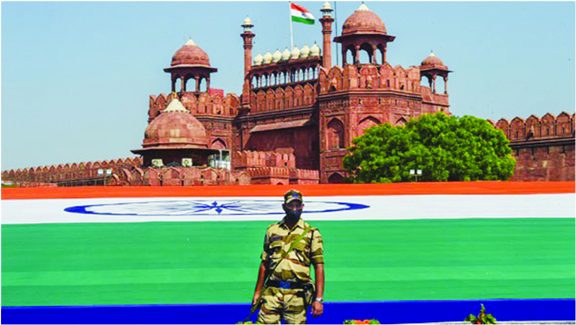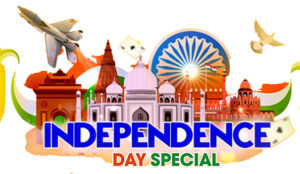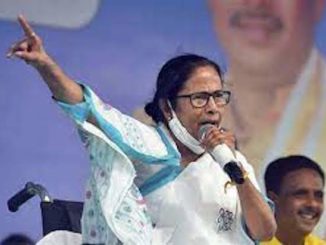
Who possibly can put obstacles in India‘s ambition to emerge as a prosperous, just society which can assure quality education, gender equality, affordable and clean energy, and social justice for all? None else, but anti-India Indians. In a few days, India completes its 75 years of independence. Surely, an occasion to rejoice, celebrate, but also to introspect, review the past, ponder over the mistakes made and identify elements waiting to ambush us in our resolve to emerge as a strong and prosperous nation. In this troubled part of the world, we are the only vibrant democracy and a stable polity, resting on twin pillars of secularism and social justice. A casual look at the disturbed neighbourhood, and we realise how blessed we are. However, it was not all that easy. The British, during their two centuries of occupation, had sucked India’s economy bone dry, left its society ruptured, polity deeply fractured and the country divided. After successfully quelling Indians’ first attempt for independence in 1857, the British adopted: “Divide et impera” (divide and rule), an old Roman maxim as their guiding principle. As a follow up, the British studied India in depth, marked over half a dozen of its fault lines, focused on possible flash points, theorised on them on the basis of half-truths, phoney research and even completely manufactured ‘facts’.
democracy and a stable polity, resting on twin pillars of secularism and social justice. A casual look at the disturbed neighbourhood, and we realise how blessed we are. However, it was not all that easy. The British, during their two centuries of occupation, had sucked India’s economy bone dry, left its society ruptured, polity deeply fractured and the country divided. After successfully quelling Indians’ first attempt for independence in 1857, the British adopted: “Divide et impera” (divide and rule), an old Roman maxim as their guiding principle. As a follow up, the British studied India in depth, marked over half a dozen of its fault lines, focused on possible flash points, theorised on them on the basis of half-truths, phoney research and even completely manufactured ‘facts’.
The underlying idea behind this chicanery was to exacerbate differences so as to pit Indians against Indians. Logically, with British departure, this devilish stratagem should have ended. But it didn’t. Aliens left India in 1947. The alienated ? marinated and honed in the Marxist-Macaulayn traditions ? immediately stepped into their shoes. Rulers changed; rules, systems and its ethos didn’t. The wile has since continued, notwithstanding some efforts to stop it.
The Macaulayns and Communists didn’t believe in the intrinsic unity of India. The Communists got the cue from Moscow, their Mecca for decades. In 1925, Stalin told a group of communist trainees, “Now, India is talked about as one entity. But there can be hardly any doubt that in the case of a revolutionary upheaval, many hitherto unknown nationalities, each with its own language and its own distinctive culture, will emerge on the scene.” No prizes for guessing the ‘revolutionaries’ Stalin had in mind while hoping for India’s disintegration.
Rajni Palme Dutt, the London-based Communist ideologue wrote, “There are strong grounds for recognizing the multinational character of the Indian people.” Another Communist leader, Sajjad Zaheer justified movement for Pakistan saying, “The demand of Muslim self -determination or Pakistan is a just, progressive, and national demand.” It was against this background that Indian Communists collaborated with the British and Muslim League, worked for the vivisection of India and creation of Pakistan.
To further complicate matters, the shrewd British allowed 560 odd princely states to remain independent, merge with India or Pakistan. Many a western scholar at that time predicted an inevitable balkanisation of India, given her diversity. One of the first major achievements of independent India, and particularly of indomitable Sardar Patel was, to weave India into one myriad coloured tapestry, and prove prophets of doom wrong.
Another landmark development. Successfully defying the US, India, led by Indira Gandhi, not only broke Pakistan into two (resulting in the birth of Bangladesh) in 1971, but also obtained surrender of over 90,000 Pakistani soldiers. One more glorious moment was in May 1998, when India, led by Atal Behari Vajpayee conducted the Pokhran-II tests, much to the chagrin of the US and Europe?and their Indian side-kicks?Congress and ‘left- liberals’. Developing indigenous Covid vaccines, administering over 200 crore doses in a record time, is India’s latest achievement.
Till about two decades back, India’s over 50 per cent population was below the poverty line. Now the figure is about ten percent ? a remarkable success story. India is now an industrial power ? its world class products range from automobiles, pharmaceuticals, telecommunications to space technology. Once living from ship-to-mouth and surviving on the American PL 480 doles, India is not only self-sufficient in food, but is also its major exporter now.
However, this journey has had its formidable roadblocks. Thanks to misplaced idealism and romantic and unrealistic world-view of Pandit Jawahar Lal Nehru, we messed up Kashmir issue and suffered an ignominious defeat at Chinese hands in 1962. Pandit Nehru’s flirtation with ‘socialism’, strangulated India’s potential for over four decades, resulting in extreme shortages and black marketing of essential commodities. ‘Garibi’ (poverty) became country’s signature tune. There were queues and long waiting periods for cement, steel, milk, vanaspati ghee, sugar, atta, kerosene, phone connection… the list is endless.
In 1978, Prof. Raj Krishna, a leftist economist looking for a scapegoat, used a term, ‘Hindu Rate of growth’ to explain India’s economic disaster. The Indian economy was in a mess because of state controls and inherent bureaucratic inefficiency and political corruption. But the crafty Left attributed India’s myriad problems to the tenets of Hinduism! Collapse of Soviet Union in 1991 helped explode myths about Communism and bring out its ugly reality to the fore. This set the pace for economic reforms in beleaguered India under the leadership of PV Narasimha Rao. Otherwise, in 1991, we were heading to, where bedraggled Sri Lanka is today.
Who possibly can put obstacles in India’s ambition to emerge as a prosperous, just society which can assure quality education, gender equality, affordable and clean energy, decent housing and social justice for all? None else, but anti-India Indians. Manufactured agitations against NRC, CAA and farm laws are the recent examples of how a minuscule minority – with a highly disproportionately high influence, can derail country’s progress.
Broadly, such anti-India Indians, can be termed as jihadis, communists (styling themselves as left-liberals) and foot soldiers of evangelical forces. These elements, deeply entrenched in the Indian ecosystem, masquerade as journalists, NGO activists, social workers, and hide behind many masks. They are loaded with massive funds, enjoy infrastructural support from abroad, have no emotional connect with India, though they hold Indian passports.
In the recent past, mischief potential of this anti-India pack was glaringly obvious in the BJP leader Nupur Sharma’s episode. Within minutes, her video was viral the world over. None questioned or discussed the contents of what she had said. Two words – ‘blasphemy and hate speech’ were banded about, without any evidence whatsoever by entwined twins – Jihadis and ‘left-liberals’. Hapless Nupur was pronounced guilty, sans any trial. Knives (literally) are out for her and those who stand by her. Living under the threat of beheading, she is in hiding. Will she manage to duck her potential killers, and for how long, is any body’s guess.
For millenniums, Indian society was a dyad of harmony and diversity, sans hegemony or uniformity, either in life style, food, language or way of worship. And this liberalism once extended from Kabul to Kanyakumari, forming a large cultural landmass – known as Bharat. Thanks to repeated Islamic invasions, values like pluralism are a history in a major part of the Bharat of yore, consisting of Afghanistan, Pakistan, Bangladesh. The spectre of radical Islam looms on residual India as well.
What does residual India stand for? Noted historian AL Basham, in The Wonder That Was India, has described ancient India, in manner, a few have managed to do. He says, “… in no other part of the ancient world were the relations of man and man, and of man and the state, so fair… In all her history of warfare, Hindu India has few tales to tell of cities put to the sword or of the massacre of non-combatants. The ghastly sadism of the kings of Assyria, who flayed their captives alive, is completely without parallel in ancient India.”
India’s fight, on 75th year of its eventful independent existence, is not only for holding on to a landmass, but also to retain values, intrinsic to a just, open, liberal and happy human society.
(The author, Balbir Punj, is a Former Member of Parliament and a Columnist.)
Source: Oneindia





Be the first to comment